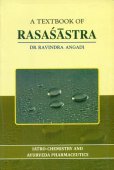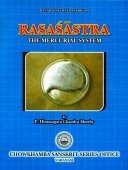Sikata, Sikatā, Shikata: 20 definitions
Introduction:
Sikata means something in Buddhism, Pali, Hinduism, Sanskrit, Jainism, Prakrit, the history of ancient India, Marathi, Hindi. If you want to know the exact meaning, history, etymology or English translation of this term then check out the descriptions on this page. Add your comment or reference to a book if you want to contribute to this summary article.
In Hinduism
Purana and Itihasa (epic history)
Source: archive.org: Puranic EncyclopediaSikata (सिकत).—An ancient hermit. When the Bhārata-battle was going on this hermit approached Droṇa and requested him to stop the battle forthwith. (Mahābhārata Droṇa Parva, Chapter 190, Verse 34).
Source: Cologne Digital Sanskrit Dictionaries: The Purana IndexSikata (सिकत).—A class of gods performing śrāddha.*
- * Brahmāṇḍa-purāṇa III. 10. 109. Vāyu-purāṇa 73. 61.

The Purana (पुराण, purāṇas) refers to Sanskrit literature preserving ancient India’s vast cultural history, including historical legends, religious ceremonies, various arts and sciences. The eighteen mahapuranas total over 400,000 shlokas (metrical couplets) and date to at least several centuries BCE.
In Buddhism
Mahayana (major branch of Buddhism)
Source: De Gruyter: A Buddhist Ritual Manual on AgricultureSikatā (सिकता) refers to “sand” (suitable for an offering ritual), according to the Vajratuṇḍasamayakalparāja, an ancient Buddhist ritual manual on agriculture from the 5th-century (or earlier), containing various instructions for the Sangha to provide agriculture-related services to laypeople including rain-making, weather control and crop protection.—Accordingly, [As the Bhagavān teaches an offering manual]: “Having enchanted sand (sikatā) twenty-one times it should be scattered on all crops, flowers, fruits, leaves and trees. All pests fall down and perish. All snails, horse flies, venomous snakes, centipedes and other pests of various kinds will be destroyed. Until the stake is drawn out they will not appear”.

Mahayana (महायान, mahāyāna) is a major branch of Buddhism focusing on the path of a Bodhisattva (spiritual aspirants/ enlightened beings). Extant literature is vast and primarely composed in the Sanskrit language. There are many sūtras of which some of the earliest are the various Prajñāpāramitā sūtras.
In Jainism
General definition (in Jainism)
Source: The University of Sydney: A study of the Twelve ReflectionsSikatā (सिकता) refers to “sandy soil”, according to the 11th century Jñānārṇava, a treatise on Jain Yoga in roughly 2200 Sanskrit verses composed by Śubhacandra.—Accordingly, “On a flat piece of wood or stone, on the ground or on sandy soil (sikatā-sthala), the wise [person] should adopt a stable posture for the accomplishment of absorption. Thus, sitting cross-legged, sitting half cross-legged, thunderbolt, hero posture and the previously mentioned pleasant and lotus [postures] as well as abandonment of the body is highly thought of. [...]”.

Jainism is an Indian religion of Dharma whose doctrine revolves around harmlessness (ahimsa) towards every living being. The two major branches (Digambara and Svetambara) of Jainism stimulate self-control (or, shramana, ‘self-reliance’) and spiritual development through a path of peace for the soul to progess to the ultimate goal.
India history and geography
Source: archive.org: Personal and geographical names in the Gupta inscriptionsSikatā (सिकता) is the name of a river mentioned in the Gupta inscription No. 14. The Gupta empire (r. 3rd-century CE), founded by Śrī Gupta, covered much of ancient India and embraced the Dharmic religions such as Hinduism, Buddhism and Jainism. The river Sikatā takes its source from the mountain Raivataka. It is the same as Suvarṇasikatā mentioned in the Junāgaṛh Rock Inscription of Rudradāman.
This Sikatā or Suvarṇasikatā is to be identified with modern Soṇarekhā. The name Suvaṇṇarehā (Suvarṇarekhā) is also met with in Vividhatīrthakalpa. Thus the first part of the river's name has remained unchanged for about two thousand years. The second part has been replaced by a new one. The exact derivative as suggested by Chatterji will be a form like Sonasītā or Sonasī. The river was named Suvarṇasikatā because its sand contains particles of gold.

The history of India traces the identification of countries, villages, towns and other regions of India, as well as mythology, zoology, royal dynasties, rulers, tribes, local festivities and traditions and regional languages. Ancient India enjoyed religious freedom and encourages the path of Dharma, a concept common to Buddhism, Hinduism, and Jainism.
Languages of India and abroad
Pali-English dictionary
Source: BuddhaSasana: Concise Pali-English Dictionarysikatā : (f.) sand.
Source: Sutta: The Pali Text Society's Pali-English DictionarySikatā, (f.) (cp. Sk. sikatā) sand, gravel; suvaṇṇa° gold dust A. I, 253. (Page 708)

Pali is the language of the Tipiṭaka, which is the sacred canon of Theravāda Buddhism and contains much of the Buddha’s speech. Closeley related to Sanskrit, both languages are used interchangeably between religions.
Marathi-English dictionary
Source: DDSA: The Molesworth Marathi and English Dictionarysikatā (सिकता).—f S Sand. 2 A disease,--the gravel or stone.
Source: DDSA: The Aryabhusan school dictionary, Marathi-Englishśikatā (शिकता).—m A hawk or falcon.
--- OR ---
sikatā (सिकता).—f Sand. A disease-the gravel or stone.
Marathi is an Indo-European language having over 70 million native speakers people in (predominantly) Maharashtra India. Marathi, like many other Indo-Aryan languages, evolved from early forms of Prakrit, which itself is a subset of Sanskrit, one of the most ancient languages of the world.
Sanskrit dictionary
Source: DDSA: The practical Sanskrit-English dictionarySikatā (सिकता).—(sik-atac Uṇādi-sūtra 3.11)
1) Sandy soil.
2) Sand (generally in pl.); लभेत सिकतासु तैलमपि यत्नतः पीडयन् (labheta sikatāsu tailamapi yatnataḥ pīḍayan) Bh. 2.5.
3) Gravel or stone (the disease).
Source: Cologne Digital Sanskrit Dictionaries: Shabda-Sagara Sanskrit-English DictionarySikatā (सिकता).—f.
(-tā) 1. Sandy soil. 2. Gravel or stone, (the disease.) 3. Sugar. f. Plu.
(-tāḥ) Sand. E. siki Sautra root, to sprinkle, Unadi aff. atac .
Source: Cologne Digital Sanskrit Dictionaries: Benfey Sanskrit-English DictionarySikata (सिकत).—I. m. pl. Sand. Ii. f. tā. 1. Sandy soil. 2. Sand, [Vikramorvaśī, (ed. Bollensen.)] [distich] 79 (pl.); [Pañcatantra] ii. [distich] 62. 3. Gravel or stone (the disease).
Source: Cologne Digital Sanskrit Dictionaries: Cappeller Sanskrit-English DictionarySikatā (सिकता).—[feminine] sand, gravel, p. vant.
Source: Cologne Digital Sanskrit Dictionaries: Monier-Williams Sanskrit-English Dictionary1) Sikatā (सिकता):—[from sik] f. (said to be [from] the above, but [probably] [from] √sic, p.1214) sand, gravel (mostly [plural] sg. also ‘a grain of sand’), [Vājasaneyi-saṃhitā] etc. etc.
2) [v.s. ...] sandy soil, [Pāṇini 5-2, 105]
3) [v.s. ...] gravel or stone (as a disease), [Suśruta]
4) [v.s. ...] [plural] Name of a race of Ṛṣis, [Mahābhārata] (part of [Ṛg-veda ix, 86] is attributed to sikatā nivāvarī).
Source: Cologne Digital Sanskrit Dictionaries: Yates Sanskrit-English DictionarySikatā (सिकता):—(tā) 1. f. Sandy soil; gravel (complaint.) plu. Sand.
Source: DDSA: Paia-sadda-mahannavo; a comprehensive Prakrit Hindi dictionary (S)Sikatā (सिकता) in the Sanskrit language is related to the Prakrit words: Sikatā, Sikayā.
[Sanskrit to German]
Sanskrit, also spelled संस्कृतम् (saṃskṛtam), is an ancient language of India commonly seen as the grandmother of the Indo-European language family (even English!). Closely allied with Prakrit and Pali, Sanskrit is more exhaustive in both grammar and terms and has the most extensive collection of literature in the world, greatly surpassing its sister-languages Greek and Latin.
Hindi dictionary
Source: DDSA: A practical Hindi-English dictionarySikatā (सिकता):—(nf) sand, sandy soil; ~[maya] sandy, full of sand.
...
Prakrit-English dictionary
Source: DDSA: Paia-sadda-mahannavo; a comprehensive Prakrit Hindi dictionarySikatā (सिकता) in the Prakrit language is related to the Sanskrit word: Sikatā.
Sikatā has the following synonyms: Sikayā.
Prakrit is an ancient language closely associated with both Pali and Sanskrit. Jain literature is often composed in this language or sub-dialects, such as the Agamas and their commentaries which are written in Ardhamagadhi and Maharashtri Prakrit. The earliest extant texts can be dated to as early as the 4th century BCE although core portions might be older.
Kannada-English dictionary
Source: Alar: Kannada-English corpusSikata (ಸಿಕತ):—
1) [noun] loose, gritty particles of worn or disintegrated rock, varying in size from about 0.1 mm to 2 mm in diameter, usu. deposited along the shores of bodies of water, in river beds or in deserts; sand.
2) [noun] the sandy bank or a river or shore of a sea.
Kannada is a Dravidian language (as opposed to the Indo-European language family) mainly spoken in the southwestern region of India.
See also (Relevant definitions)
Starts with: Sikataksha, Sikatamaha, Sikatamaya, Sikatameha, Sikatamehin, Sikatan, Sikatanuviddhanmalan, Sikataparvatamaru, Sikatapraya, Sikatarenu, Sikatasetu, Sikatashma, Sikatasindhu, Sikatasthala, Sikatataila, Sikatatva, Sikatavant, Sikatavartman, Sikatavat.
Ends with (+5): Adharshikata, Aitihasikata, Anaishpeshikata, Anekamsikata, Anunasikata, Dakshikata, Kaushikata, Mahasahasikata, Manasikata, Naishpeshikata, Nippesikata, Pamsusikata, Pandusikata, Rabhasikata, Ramalasikata, Rasikata, Sahasikata, Saisikata, Samasikata, Susikata.
Full-text (+22): Sikatamaya, Saikata, Sikatila, Nivavari, Sikatavat, Sikatatva, Sikatasetu, Sikatapraya, Susikata, Sikta, Saikatika, Sikatamehin, Sikatasindhu, Sikate, Sikatavartman, Shipivishtaka, Sikatameha, Shikaya, Pandusikata, Ushasikata.
Relevant text
Search found 21 books and stories containing Sikata, Sikatā, Shikata, Śikatā; (plurals include: Sikatas, Sikatās, Shikatas, Śikatās). You can also click to the full overview containing English textual excerpts. Below are direct links for the most relevant articles:
Garga Samhita (English) (by Danavir Goswami)
Verse 4.17.10 < [Chapter 17 - Prayers to Srī Yamunā]
Verse 8.13.102 < [Chapter 13 - A Thousand Names of Lord Balarāma]
Vakyapadiya of Bhartrihari (by K. A. Subramania Iyer)
Verse 3.13.29 < [Book 3 - Pada-kāṇḍa (13): Liṅga-samuddeśa (On Gender)]
The Tattvasangraha [with commentary] (by Ganganatha Jha)
Verse 1134 < [Chapter 16 - Examination of the Import of Words]
Verse 572 < [Chapter 10 - The Examination of the First Category—‘Substance’]
Sushruta Samhita, volume 2: Nidanasthana (by Kaviraj Kunja Lal Bhishagratna)
Rig Veda (translation and commentary) (by H. H. Wilson)
Mahabharata (English) (by Kisari Mohan Ganguli)
Related products


